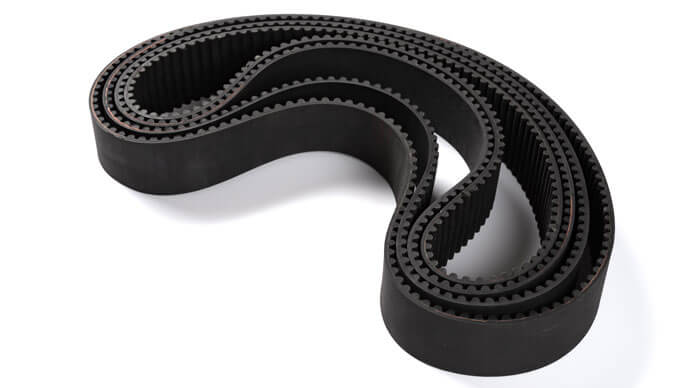Rubber belting, also known as conveyor belts, is a type of continuous moving belt made from rubber or rubber-like materials.
These belts are widely used in various industries due to their numerous benefits and versatility. Some of the key benefits and uses of rubber belting include:
Benefits of Rubber Belting:
- High Durability: Rubber belting is designed to withstand harsh environments, heavy loads, and abrasive materials, making them highly durable and long-lasting.
- Excellent Traction: The surface of rubber belting provides excellent traction, preventing slippage of materials being transported, especially on inclines or declines.
- Shock Absorption: Rubber belting has inherent shock-absorbing properties, reducing the impact on conveyed materials and the conveyor system itself.
- Noise Reduction: Rubber belting helps to dampen noise generated during material transportation, creating a quieter and more comfortable working environment.
- Flexibility: Rubber belting can be produced in various widths and lengths to suit different conveyor systems and specific application requirements.
- Resistance to Chemicals and Oils: Many rubber compounds used in conveyor belts offer resistance to chemicals and oils, ensuring the belt’s integrity and functionality even when handling corrosive or oily materials.
- Easy Maintenance: Rubber belting is relatively easy to maintain and repair, reducing downtime and maintenance costs.
- Cost-Effective: Considering their durability and longevity, rubber belts offer a cost-effective solution for material handling needs.
Uses of Rubber Belting:
- Material Handling: Rubber belting is commonly used in industries for bulk material handling, including mining, agriculture, construction, and manufacturing. They efficiently transport various materials such as ores, coal, grains, sand, gravel, and packaged goods.
- Industrial Conveyors: Rubber belting is a crucial component in a wide range of conveyor systems used in industries like logistics, distribution centres, and manufacturing plants.
- Food Processing: Food-grade rubber belting is used in the food and beverage industry to transport food products, ensuring hygiene and compliance with food safety regulations.
- Recycling and Waste Management: Rubber belting is employed in recycling facilities and waste management centres to transport and sort recyclable materials and waste.
- Airports: Rubber belting is used in baggage handling systems at airports to efficiently move luggage from check-in to baggage claim areas.
- Agriculture: In agriculture, rubber belting is utilized for various applications, including moving crops, feed, and other agricultural products.
- Packaging and Sorting: Rubber belting is used in packaging and sorting systems to move and sort products during the manufacturing and distribution processes.
- Construction: In the construction industry, rubber belting is used for transporting construction materials on construction sites.
- Automotive: Rubber belting is employed in automotive manufacturing plants for assembly line conveyance of car parts and components.
Rubber belting’s versatility, durability, and efficiency in transporting materials make it an essential component in a wide range of industries, contributing to smoother and more productive material handling processes.


